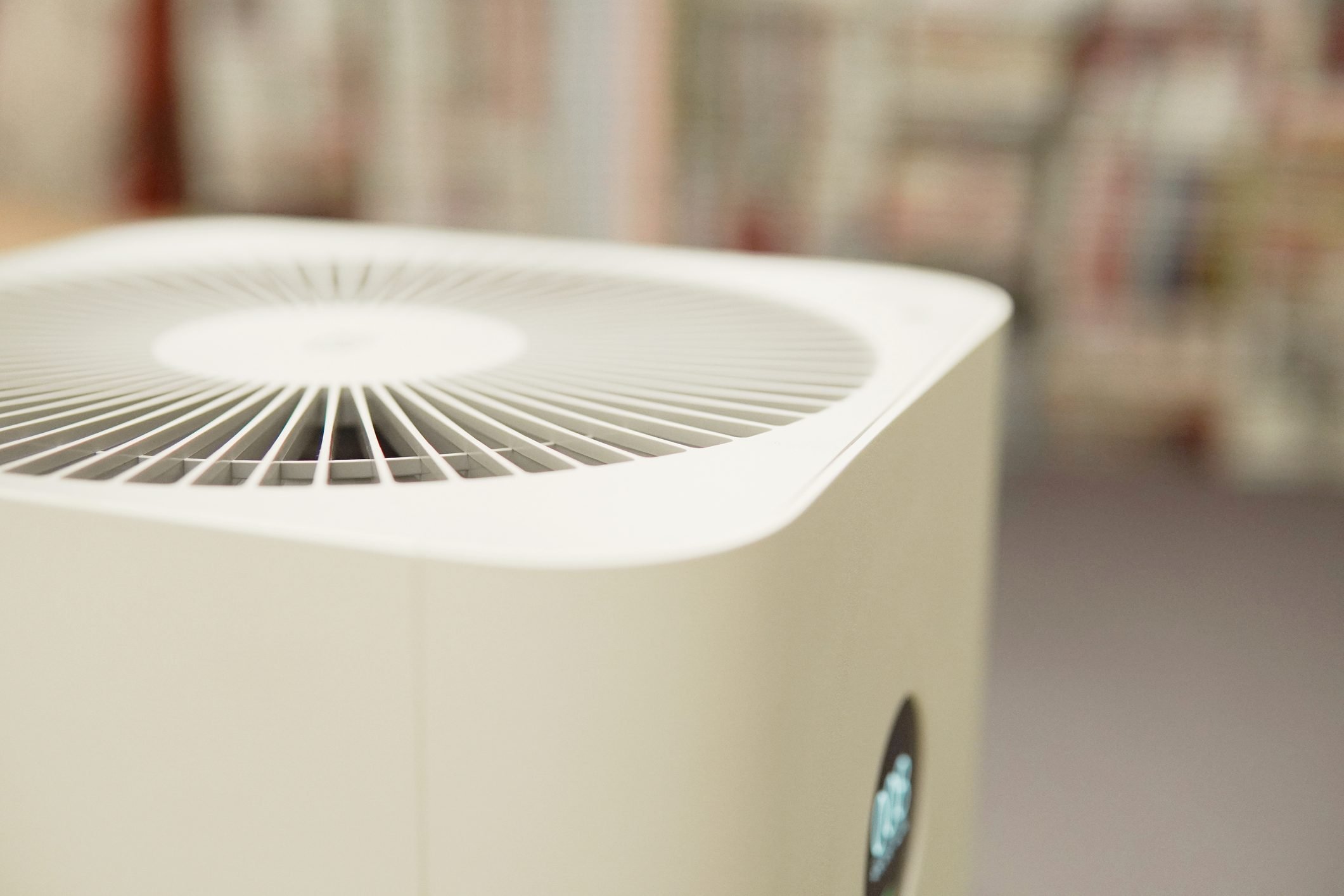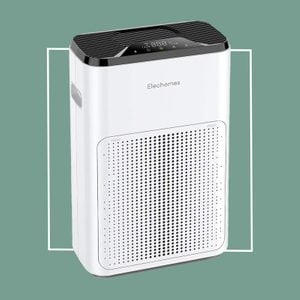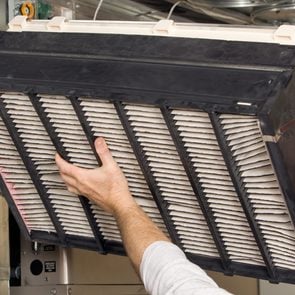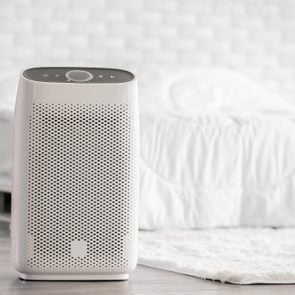Do Air Purifiers Work? A Guide to Air Purifiers and How They Work
Updated: Mar. 16, 2022
Here's what you need to know if you want to clean your air of dust, smoke, pet dander, or other indoor air pollutants.
On This Page
Air pollution is a problem indoors and out
Take a deep breath. Are you confident that’s relatively fresh air filling your lungs? Or are you considering an air purifier to clean the air you’re breathing?
People spend about 90 percent of their time indoors, according to the U.S. Environmental Protection Agency (EPA). And they share that space with all sorts of allergens and pollutants.
You might be breathing in pet dander, mold, tobacco smoke, pesticides, allergens like dust, and a number of chemicals. From paint and candles to cleaning products and air fresheners, there are all sorts of household items that could be contributing to air pollution inside your home.
There’s also plenty of outdoor air pollution seeping in from windows and doors. In fact, concentrations of some pollutants are as much as two to five times higher indoors than out. (Learn these surprising ways to cut down on indoor air pollution.)
If you want to clean up the air inside your house, here’s a look at the types of air purifiers, how they work, and how to choose the right one for your home.
(Check out the times in your life you should be using an air purifier.)
Growing interest in air purifiers
Interest in air purifiers has increased due to the Covid-19 pandemic, as well as continued environmental issues like seasonal wildfires.
The global air purifier market was valued at $9.55 billion in 2019 and is projected to reach $24.62 billion by 2027, according to a forecast published in fall 2020 by Grand View Research.
In releasing the report, the firm noted that rising air pollution levels, increasing disposable income, and growing awareness of the harmful effects of air pollution on human health all play a part in boosting sales growth.
What does an air purifier do?
Air purifiers work to clean the air of allergens and other particle that can negatively affect our health. Many people use an air purifier to rid the air of dust, mold, chemicals, and pet dander.
You might consider an air purifier to filter out the effects of secondhand cigarette smoke. Or maybe you want an air purifier to help you breathe easier because you have asthma or allergies.
(In addition to air purifiers, try these plants to detoxify your home.)

Types of air purifiers
There are some air purifiers that can be attached to your home’s heating, ventilation, and air conditioning (HVAC) system. These work to purify the air in your entire house.
The majority of devices, however, are portable, stand-alone air purifiers that treat one room at a time. Many sit on the floor or a desk, though some air purifiers are specifically made for the car.
Do air purifiers work?
Not all air purifiers are created equal. A major factor that determines how well a purifier will work (and whether it’ll cause further damage to your health) is how it cleans the air. There are four ways an air purifier will do that:
Air purifiers with HEPA filters
Many air purifiers utilize a high-efficiency particulate air (HEPA) filter. A HEPA filter is a pleated mechanical filter that works by forcing air through a very fine mesh.
Air purifiers that use a HEPA filter are able to remove 99.97 percent of dust, pollen, mold, bacteria, and airborne particles that are as small as 0.3 microns, according to the EPA.
HEPA filters are the most effective way to removing airborne particles and allergens from indoor air.
Ionic air purifiers
These air purifiers generate and emit negatively charged ions in the air. An ion is an atom or a molecule with an electric charge. These ions are designed to attract particles like viruses and mold spores and pull them out of the air.
That doesn’t mean the particles leave the room, though. When the particles drop out of the air, they land on surfaces. If you disturb them—say, by brushing against the surface—you could resuspend the particles in the air.
According to the EPA, ionic air purifiers may be effective at removing smaller particles, like those from cigarette smoke. But they’re less successful at removing larger particles, like house dust allergens or pollen.
Because they also emit ozone during the process, there may be unwanted health effects to consider (more on that below).
Ozone air purifiers
Ozone in the upper atmosphere is the protective layer that blocks harmful UV radiation.
But ozone in the air we breathe can be dangerous. It’s a gas that can damage the lungs when inhaled.
Ozone air purifiers release ozone, which is supposed to react with pollutants in the air and break them down.
Experts advise against them because studies have shown they aren’t effective at removing substances they promise to eliminate. And, of course, the ozone that is released can be harmful to living things including people, animals, and plants.
Ultraviolet-C air purifiers
Ultraviolet (UV) is a type of radiation typically associated with sunlight. The different types of UV rays are classified by their wavelengths, according to the Food and Drug Administration (FDA). UVA rays are the longest, followed by UVB, then UVC.
We wear sunblock outdoors to protect against UVA and UVB rays, which can cause skin burning and premature aging.
UVC rays don’t make it to Earth because they’re absorbed by the ozone layer. They can be produced, however, with a lamp or other light.
UVC lamps have been used for decades to fight the spread of bacteria, germs, and the diseases (like tuberculosis) caused by them, according to the FDA. There’s been recent interest in UVC to fight the spread of the virus that causes Covid-19.
UVC air purifiers work ideally by inactivating microbes. It is a technology often used in conjunction with HEPA filters, which means there’s a good chance the filters are doing all the work.
The FDA says there’s a chance that the UV lamps are emitting small amounts of radiation and ozone, neither of which are good for your health.
How to choose an air purifier
Be sure to choose a purifier that matches the size of the room you want to purify. Start by calculating the square footage of your space.
To figure out the area of the room, multiply the length (in feet) times the width (in feet) of the space you want to cover. That will give you the size of the area in square feet.
Choose an air purifier that will cover at least the size of your room.
To help you choose the right device for your room, most air purifiers will have a clean air delivery rate, or CADR rating. The higher the CADR, the larger the area the purifier can cover and the more particles it can remove, according to the EPA.
Some air purifiers will note CADR ratings for specific types of pollutants: dust, pollen, and tobacco smoke. If you have problems with one of these, look for a device that specifically targets it.
Where to place your air purifier
Place the purifier wherever you spend the most time. Spots like the bedroom, office, or living room are the key areas to consider.
Check to see if your model is supposed to be placed on the floor or is designed to be set on a table. Be sure that airflow isn’t blocked by a curtain or other object.
Some models have “sleep” or “auto-off” controls to save energy when you don’t need them. You can run them all the time when you’re in the room or just use them when you need them.
(Here’s how doctors allergy-proof their homes.)
Products
- The 8 Best Air Purifiers for Smoke
- The 9 Best Air Purifiers for Pets
- The 8 Best Air Purifiers for Viruses
- 8 Air Purifiers for Better Air Quality, According to Allergists
- 7 Best Air Purifiers for Mold, According to Experts



